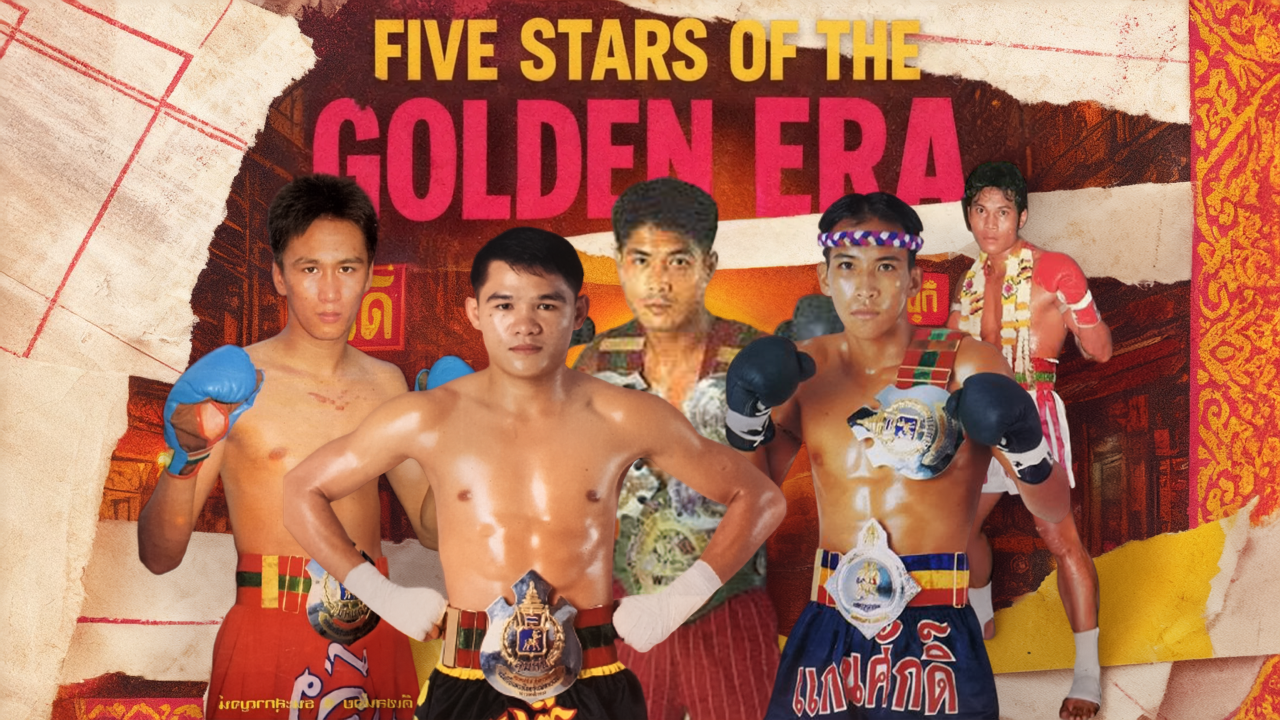Five Stars of the Golden Era

Muay Thai experienced a surge in popularity during the late 1980s and early 1990s. Fueled by Thailand’s booming economy, Muay Thai became a national obsession and the country’s best athletes recognized that they could become extremely wealthy and extremely famous by training and fighting professionally. The capital city of Bangkok became a magnet for some of the best Muay Thai fighters not only of one generation, but of all time. As a result, this period in the history of Muay Thai is known as the Golden Era.
To this day, the fighters of the Golden Era are revered for their abilities and how they changed the face of Muay Thai for years to come. In the above video, Alby Tam of Combat Culture explains how these fighters revolutionized Muay Thai and focuses on five specific fighters who remain some of the most celebrated martial artists in the history of Thailand.
Samart Payakaroon
Any conversation about the Golden Era has to begin with Samart, perhaps the most famous Muay Femur fighter of all time. Muay Femur is defined by skill, technique, and a refined approach to Muay Thai, and fighters who rely on this style tend to have an extremely high fight IQ. Samart was no exception.
Samart’s agility and evasive abilities allowed him to wear down his opponents. Meanwhile, his use of teep attacks were also vital to his success, and he would use them to maintain distance from his opponents and set up combination attacks involving punches and elbow strikes. These strikes were highly effective and Samart was one of the few Muay Thai fighters from this era who could easily transition to Western style boxing, where he also enjoyed notable success.
Dieselnoi Chor Thanasukarn
Deiselnoi was a very different fighter from Samart, particularly because of his body type. Whereas Samart was a compact 5’ 7”, Dieselnoi was 6’ 2” and was perfectly suited for the Muay Khao style. Deiselnoi excelled at clinch fighting and the length of his legs made his knee strikes especially dangerous. When combined with his aggressive style, strength, and speed, the result was an overwhelming attack that even the best fighters struggled to defend against or even endure.
Sagat Petchyindee
Perhaps most famous in the West for being the inspiration behind the Sagat character from Street Fighter, the real Sagat used the Muay Mat style to great effect. He was explosive, strong, and could endure punishing blows without being slowed down. No surprise, this aggressive style was well-suited for Western-style boxing, and Sagat easily transitioned to that style. He won several titles in the lightweight division throughout the 1980s.
Kaensak Sor Ploenjit
Kaensak initially favored the Muay Khao style, but changed over to the more technical Muay Femur style later in his career. His counters were particularly formidable and he often used defensive strategies to advance offensively, which would confuse opponents and leave them open to his signature counter kicks. Kaensak was named Fighter of the Year by the Sports Writers Association of Thailand in 1989 and 1990, one of only two fighters to ever receive that honor (the other being Anuwat Kaewsamrit in 2003 and 2004).
Karuhat Sor Supawan
Another fighter who favored the Muay Femur style, Karuhat had perhaps one of the highest fight IQs of the Golden Era and was extremely swift on his feet. Karhuat was an extremely technical fighter who was smaller than most of his opponents, but he could avoid sustaining damage because of his agility and knowledge of fight dynamics. Offensively, Karuhat was known for his elbow strikes, which could be delivered quickly when fighting in the clinch and lead to dramatic shifts in the momentum of the fight.
Watching the Golden Era
Though these fighters retired years ago, you can still find many of their fights online, particularly on YouTube. The quality of the videos may not be HD, but they are free and, more importantly, they are curated by people who know the most entertaining fights, as well as the fights that showcase excellent examples of the various styles of Muay Thai.

